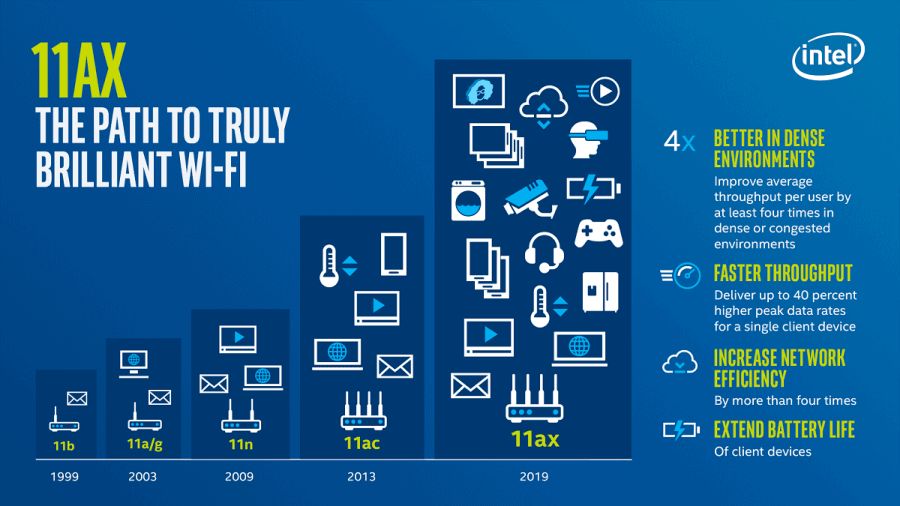The Wi-Fi Alliance, a global network of manufacturers and software companies, today announced Wi-Fi 6 which uses the technology 802.11ax. 802.11ax is the newest standard after 802.11ac in use today.
The 802.11 number refers to a set of standard wireless network transmission methods, and as you already know, there are many different ones, such as the 802.11b we used in the past. 802.11n and 802.ac are the most common standards used today.
The Wi-Fi Alliance today announced today that it will use generational terminology for advanced Wi-Fi technologies. It will call 802.11ax, Wi-Fi 6 and use the same naming system for older models: 802.11ac will be referred to as Wi-Fi 5 and 802.11n as Wi-Fi 4.
The new naming system will identify Wi-Fi generations in a numerical order that corresponds to significant Wi-Fi developments. Generation names can be used by product vendors to identify the latest technology Wi-Fi που υποστηρίζει μια device, by operating system vendors to determine the establishment of a Wi-Fi connection between a device and a network, and by service providers to identify the capabilities of a Wi-Fi network to their customers.
As a user, all you have to do is make sure the device supports the latest Wi-Fi 6 standard.

Be aware that Wi-Fi 6 refers to the latest generation that supports 802.11ax technology. As for the latest 802.11ax technology, technicians argue that one of the benefits is also its compatibility with older devices.
In addition to this, they promise improvements and more possibilities. You can read the introduction to Wi-Fi 6 from Wi-Fi Alliance page.
_______________________
- Wi-Fi router and Wi-Fi: all you need to know about the wireless network
- Capturing from fingerprints of a WhatsApp image
- WPA3: When will we see it on the Wi-Fi we use?





